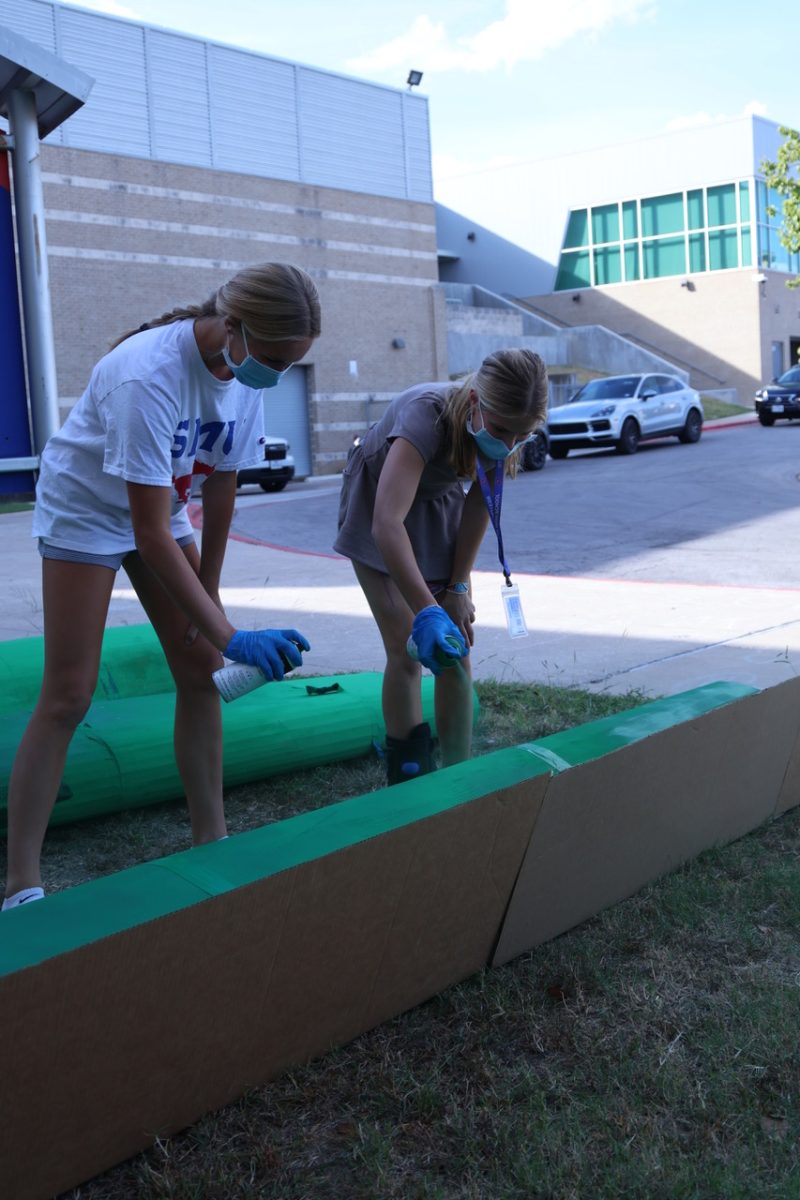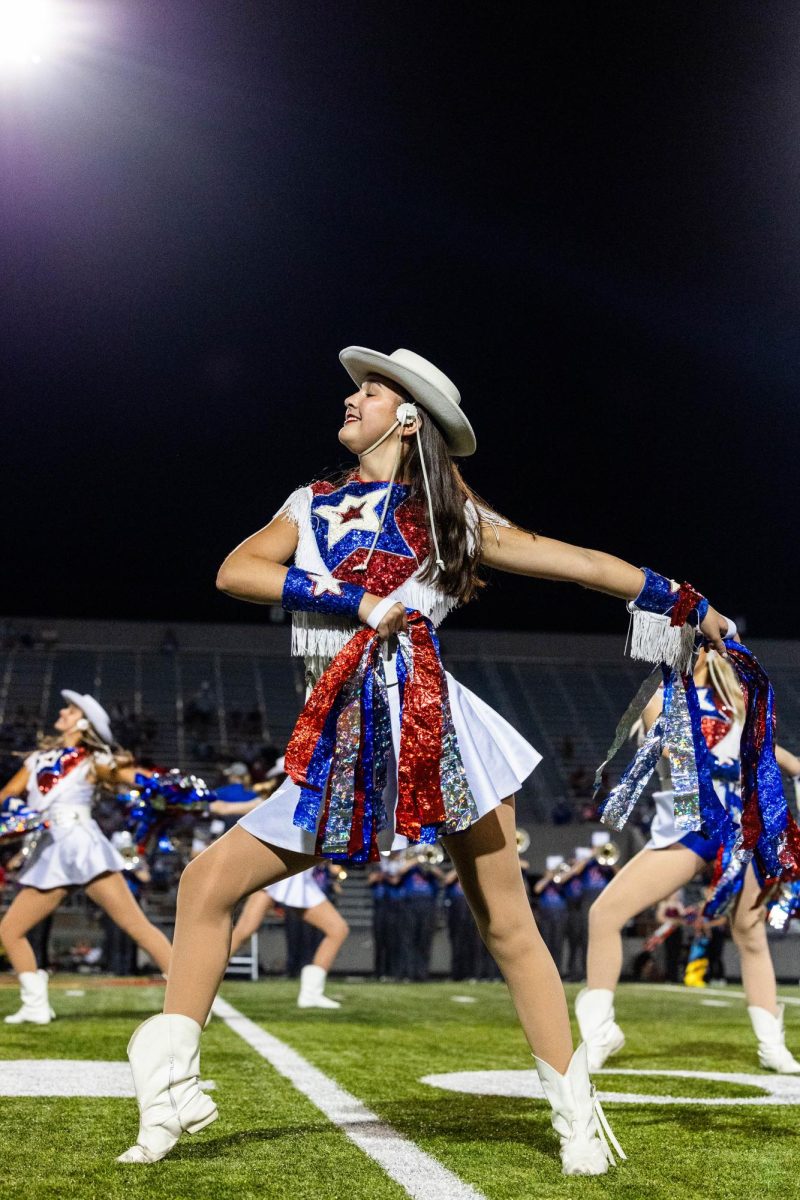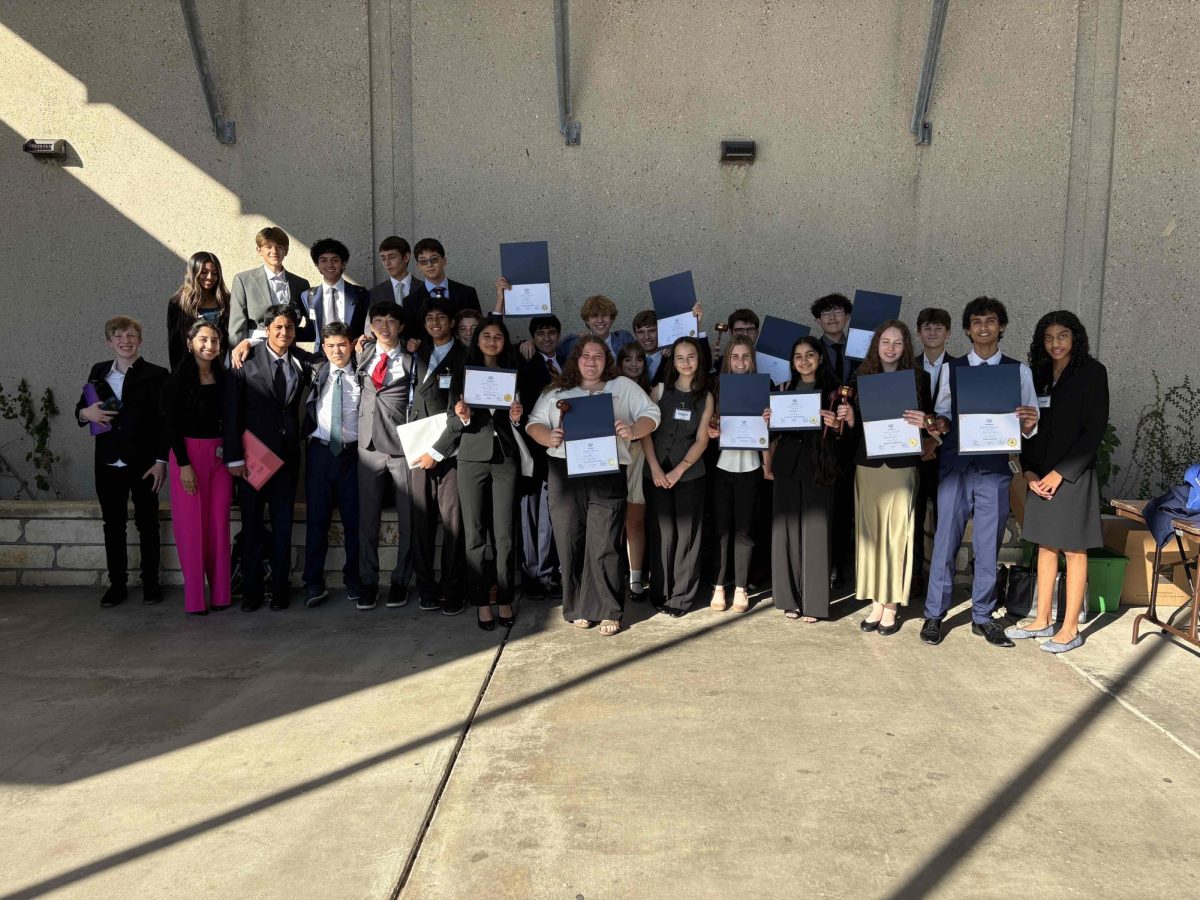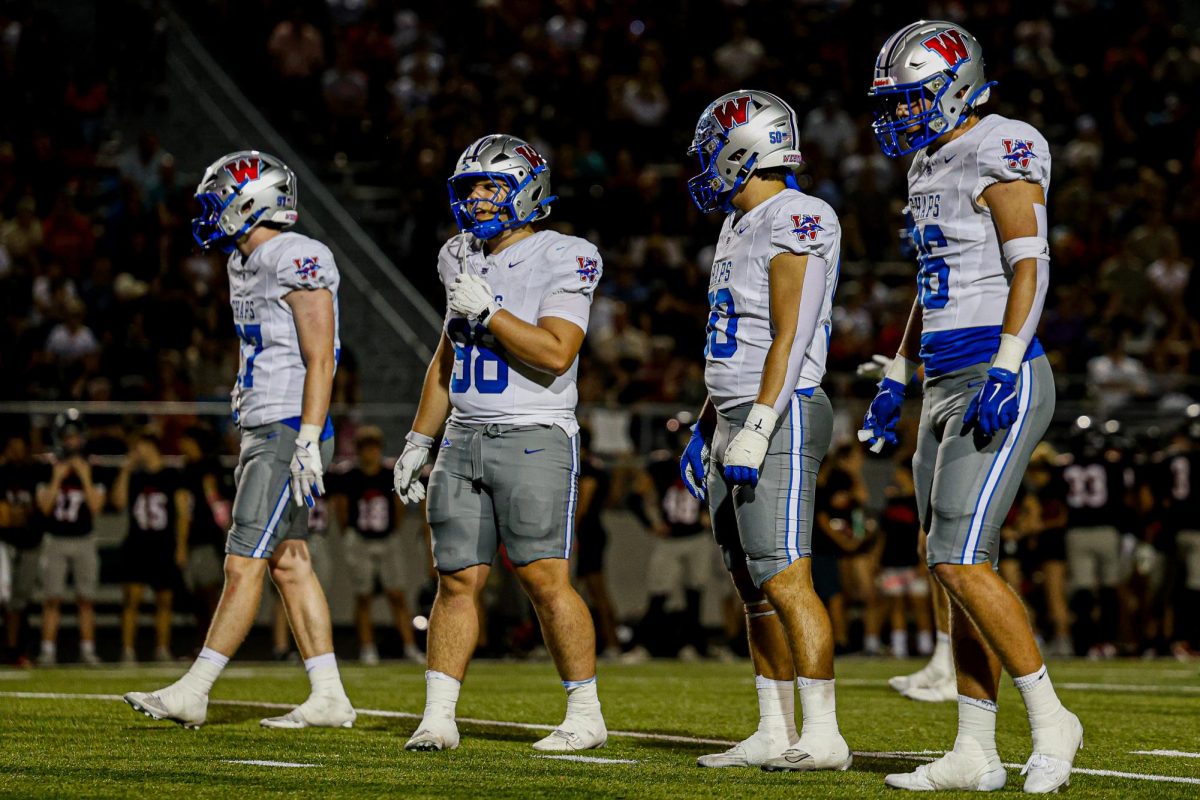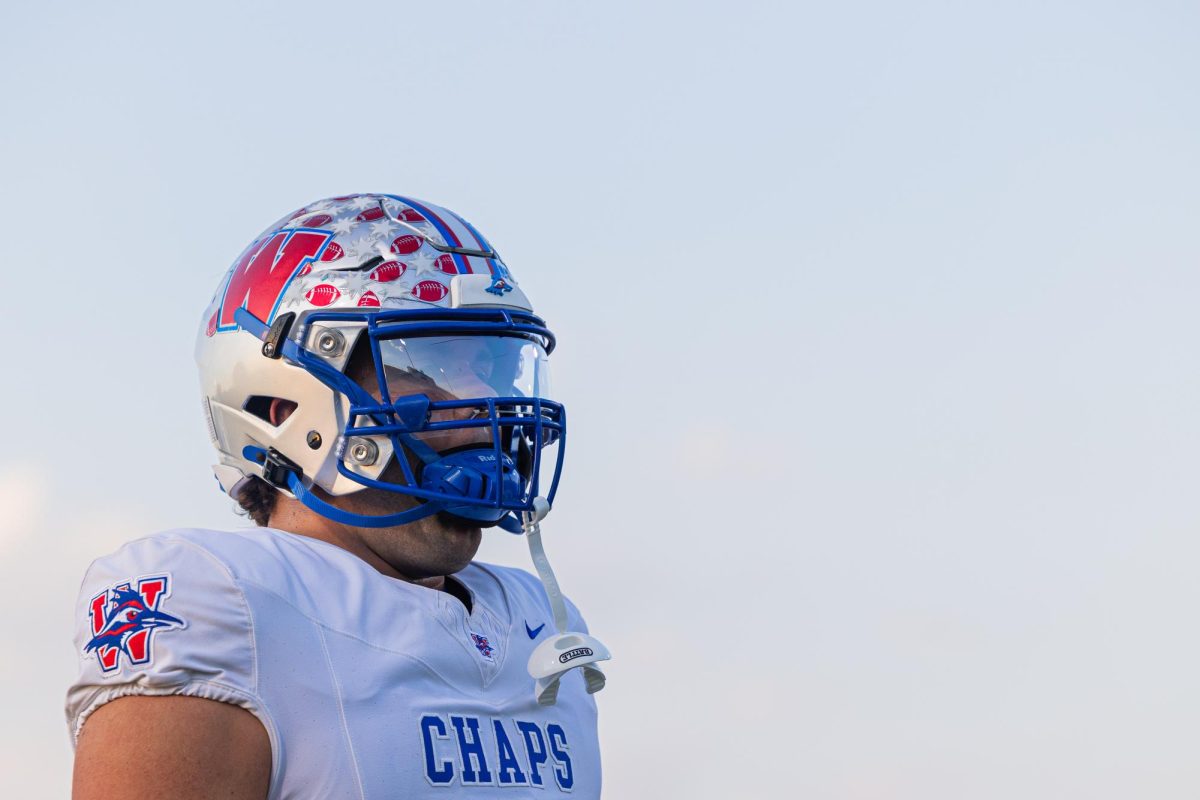School-Based therapists Brooke Anderson and Katie Bryant had less than a month to coordinate “Be Kind to Your Mind” Week with students the first time they did it in 2023. An extensive list of administrative tasks included reaching out to many therapists and other wellness providers, working with administration to get dates approved and more.
“It was a lot of work in a short amount of time,” Anderson said. “Since Suicide Prevention Month falls in September, we had to hit the ground running. We were also getting to know the student council members and hoped they would want to work with us, and they did.”
This year marks the third annual wellness fair. Anderson and Bryant said they partner with therapists, nutritionists and yoga instructors. They also partner with clubs that offer stress relievers such as drinking water or painting rocks with positive messages. It’s an event-filled week with plenty of opportunities to de-stress and learn more about mental health.
Suicide is the 11th-leading cause of death in the U.S. amongst those ages 10-34, making it the second-leading cause of death according to the American Foundation for Suicide Prevention.
The International Association for Suicide Prevention and the World Health Organization introduced World Suicide Prevention Day Sept. 10, 2003 to raise awareness, reduce stigma and promote action to prevent suicides. Two decades later, a 2023 study found that nearly half of Texas youths are being treated for depression or suicidal thoughts reported at least one suicide attempt.
“Comparing our data to the national average, it’s important to highlight that our numbers only reflect the students we know about,” Bryant said. “We know there are many more kids who are struggling, and that’s why we make sure our faces and resources are highly visible. Even if they don’t directly access us, we want students to know we’re here as a support system, just in case.”
What students and staff hear and see around the school paints a picture on the growing challenges of mental health in youth today. These observations are signs of someone in need of action and support. As a result, schools work more closely with crisis lines, which can play a massive role in de-escalating emergencies and ensuring students get the support they need.
“We know our students are utilizing the 988 and 741741 crisis lines,” Bryant said. “We’ve had kids in very serious crises where responders from the hotline had to intervene, and I’m happy they did. I also think our staff is more willing to reach out for help for themselves or their families.”
The counselors’ approach is rooted in the belief that a collaborative effort between school and home offers the most efficient support system. However, this is not a one-size-fits-all solution, as the severity of each situation may vary dramatically.
Recognizing the warning signs is the first crucial step in prevention.
“A change in behavior and patterns is a key warning sign,” Anderson said. “For example, someone who was once active and involved might start avoiding others, their sleep pattern could be really off, or they might make a lot of negative comments and seem hopeless.”
Beyond the more subtle behavioral shifts, direct statements can be a significant warning sign that demands immediate attention.
“Some flat out will say things would be better off if I wasn’t here,” Bryant said. “I don’t think kids say that as much as just a flippant comment. Some still do, but lots of them are really thinking that and feeling that.”
When looking at student mental health statistics there is a wide range of diagnoses. This means that people who experience just one negative thought don’t necessarily need to be rushed to the hospital for extra care. Bryant and Anderson work with students and parents to narrow down where they’re at and assess what help they can provide.
“It’s good to remember that suicidal thoughts are not black and white,” Bryant said. 
By providing students with a wide range of practical coping mechanisms, the Health and Wellness Fair helps continue to normalize conversations about mental health. This public display of support has contributed to not only students, but also their parents and school staff, to openly address their mental and emotional well-being.
“We see a lot more students probably willing to talk about it,” Anderson said. “I also think we see an uptick of kids and parents seeking out help themselves. When we let them know we’re doing this, it’s a reminder that help and resources are there.”
Alongside Anderson and Bryant, student-led clubs and organizations contribute their time to support these actions and promote awareness to the school. For example, student council hosted a poster-painting party, and all the student clubs helped with positive messaging around campus.
“Student council has taken a big role in helping us out,” Anderson said. “It’s truly a team effort between us and the students.”
As secretary of Health & Wellness on StuCo, James Garcia-Jolly’s main duty is to plan and execute projects and events related to health and wellness, such as the “Stride for Life” campaign. For Suicide Prevention Week, he was responsible for coordinating with school therapists to ensure events ran smoothly.
“The most rewarding part of working on this project was being able to reach such a large volume of people through our events throughout the week,” Garcia-Jolly said. “Without the support of StuCo and the school-based therapists, being able to connect with so many students and spread the message of ‘be kind to your mind’ would be impossible.”
This week-long event, centered around mental health awareness, drew a lot of attention from the student body. Student organizations hope the positive message continues to impact the student body throughout the year.
“I hope students use this week as a constant reminder that they are perfect just as they are,” Student Body President Laura Navarez said. “I hope they remember that they do not have to live for anyone else’s expectations, and that they are able to find peace in what they are passionate about without pressure from others.”
Student organizations continue to work to make an impact in the community for other health concerns during Suicide Prevention week, too. HOSA partnered with “We Are Blood” to host a blood drive Sept. 19 to support local Austin hospitals and facilities lacking funding to purchase blood.
School-based therapists also work year-round to help students grow comfortable in their mental health and recognize the phrase “you matter and you are enough.” The goal is to create an environment where students understand that it’s okay to not be okay, HOSA junior vice president Mayan Kasturi said.
“I just always want teens to know that being a teenager is hard, and we don’t normalize that enough, especially in a high-performing school,” Anderson said. “I think students feel like there’s something wrong with them if they’re not doing everything right, but having big feelings is a normal part of being human.
“A tough time doesn’t mean you have a mental health issue; it means you’re normal and you need a little support. I just wish teenagers knew that it’s okay to not keep up with everyone and that we all have difficult moments.”
School-Based therapists Brooke Anderson and Katie Bryant had less than a month to coordinate “Be Kind to Your Mind” Week with students the first time they did it in 2023. An extensive list of administrative tasks included reaching out to many therapists and other wellness providers, working with administration to get dates approved and more.
“It was a lot of work in a short amount of time,” Anderson said. “Since Suicide Prevention Month falls in September, we had to hit the ground running. We were also getting to know the student council members and hoped they would want to work with us, and they did.”
This year marks the third annual wellness fair. Anderson and Bryant said they partner with therapists, nutritionists and yoga instructors. They also partner with clubs that offer stress relievers such as drinking water or painting rocks with positive messages. It’s an event-filled week with plenty of opportunities to de-stress and learn more about mental health.
Suicide is the 11th-leading cause of death in the U.S. amongst those ages 10-34, making it the second-leading cause of death according to the American Foundation for Suicide Prevention.
The International Association for Suicide Prevention and the World Health Organization introduced World Suicide Prevention Day Sept. 10, 2003 to raise awareness, reduce stigma and promote action to prevent suicides. Two decades later, a 2023 study found that nearly half of Texas youths are being treated for depression or suicidal thoughts reported at least one suicide attempt.
“Comparing our data to the national average, it’s important to highlight that our numbers only reflect the students we know about,” Bryant said. “We know there are many more kids who are struggling, and that’s why we make sure our faces and resources are highly visible. Even if they don’t directly access us, we want students to know we’re here as a support system, just in case.”
What students and staff hear and see around the school paints a picture on the growing challenges of mental health in youth today. These observations are signs of someone in need of action and support. As a result, schools work more closely with crisis lines, which can play a massive role in de-escalating emergencies and ensuring students get the support they need.
“We know our students are utilizing the 988 and 741741 crisis lines,” Bryant said. “We’ve had kids in very serious crises where responders from the hotline had to intervene, and I’m happy they did. I also think our staff is more willing to reach out for help for themselves or their families.”
The counselors’ approach is rooted in the belief that a collaborative effort between school and home offers the most efficient support system. However, this is not a one-size-fits-all solution, as the severity of each situation may vary dramatically.
Recognizing the warning signs is the first crucial step in prevention.
“A change in behavior and patterns is a key warning sign,” Anderson said. “For example, someone who was once active and involved might start avoiding others, their sleep pattern could be really off, or they might make a lot of negative comments and seem hopeless.”
Beyond the more subtle behavioral shifts, direct statements can be a significant warning sign that demands immediate attention.
“Some flat out will say things would be better off if I wasn’t here,” Bryant said. “I don’t think kids say that as much as just a flippant comment. Some still do, but lots of them are really thinking that and feeling that.”
When looking at student mental health statistics there is a wide range of diagnoses. This means that people who experience just one negative thought don’t necessarily need to be rushed to the hospital for extra care. Bryant and Anderson work with students and parents to narrow down where they’re at and assess what help they can provide.
“It’s good to remember that suicidal thoughts are not black and white,” Bryant said.
By providing students with a wide range of practical coping mechanisms, the Health and Wellness Fair helps continue to normalize conversations about mental health. This public display of support has contributed to not only students, but also their parents and school staff, to openly address their mental and emotional well-being.
“We see a lot more students probably willing to talk about it,” Anderson said. “I also think we see an uptick of kids and parents seeking out help themselves. When we let them know we’re doing this, it’s a reminder that help and resources are there.”
Alongside Anderson and Bryant, student-led clubs and organizations contribute their time to support these actions and promote awareness to the school. For example, student council hosted a poster-painting party, and all the student clubs helped with positive messaging around campus.
“Student council has taken a big role in helping us out,” Anderson said. “It’s truly a team effort between us and the students.”
As secretary of Health & Wellness on StuCo, James Garcia-Jolly’s main duty is to plan and execute projects and events related to health and wellness, such as the “Stride for Life” campaign. For Suicide Prevention Week, he was responsible for coordinating with school therapists to ensure events ran smoothly.
“The most rewarding part of working on this project was being able to reach such a large volume of people through our events throughout the week,” Garcia-Jolly said. “Without the support of StuCo and the school-based therapists, being able to connect with so many students and spread the message of ‘be kind to your mind’ would be impossible.”
This week-long event, centered around mental health awareness, drew a lot of attention from the student body. Student organizations hope the positive message continues to impact the student body throughout the year.
“I hope students use this week as a constant reminder that they are perfect just as they are,” Student Body President Laura Navarez said. “I hope they remember that they do not have to live for anyone else’s expectations, and that they are able to find peace in what they are passionate about without pressure from others.”
Student organizations continue to work to make an impact in the community for other health concerns during Suicide Prevention week, too. HOSA partnered with “We Are Blood” to host a blood drive Sept. 19 to support local Austin hospitals and facilities lacking funding to purchase blood.
School-based therapists also work year-round to help students grow comfortable in their mental health and recognize the phrase “you matter and you are enough.” The goal is to create an environment where students understand that it’s okay to not be okay, HOSA junior vice president Mayan Kasturi said.
“I just always want teens to know that being a teenager is hard, and we don’t normalize that enough, especially in a high-performing school,” Anderson said. “I think students feel like there’s something wrong with them if they’re not doing everything right, but having big feelings is a normal part of being human.
“A tough time doesn’t mean you have a mental health issue; it means you’re normal and you need a little support. I just wish teenagers knew that it’s okay to not keep up with everyone and that we all have difficult moments.”



